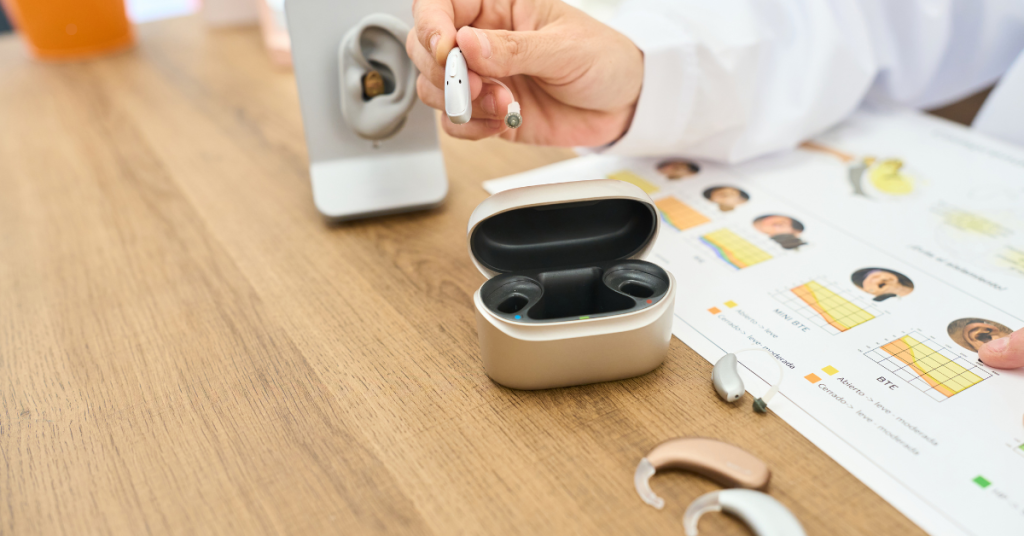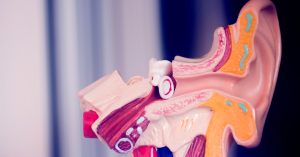Hearing aids have come a long way from the bulky, trumpet-shaped devices of centuries past. Today, they are sleek, discreet, and packed with smart features that not only improve hearing but also enhance overall quality of life. But how did we get here? Understanding the evolution of hearing aids is more than a walk through history—it’s a testament to human ingenuity and a reflection of how society’s views on hearing loss have changed over time.
In this article, we’ll take a journey through the soundscape of history, exploring how hearing aids evolved from rudimentary acoustic tools to sophisticated digital companions. Whether you’re someone who wears hearing aids, cares for someone who does, or is simply curious about the technology, this exploration will offer insights into how innovation has transformed the way we hear the world.
Early Attempts at Amplifying Sound
Long before the invention of modern electronics, people with hearing loss relied on basic, often handcrafted tools to help them hear better. The earliest hearing aids were entirely mechanical—ingenious yet limited in their function. Chief among these early solutions was the ear trumpet, a device that dates back to the 17th century. Made from materials like animal horns, metal, or later, polished silver and brass, ear trumpets funneled sound directly into the ear. They didn’t amplify sound the way modern devices do; instead, they concentrated it, allowing for modest improvements in hearing.
Designs varied widely—some were small and handheld, while others were large, floor-standing apparatuses. As time went on, manufacturers even disguised them within items like fans or headpieces, reflecting a societal desire to conceal hearing loss rather than embrace it. This stigma often prevented people from seeking help, and it shaped the aesthetics of hearing aids for years to come.
Despite their simplicity, ear trumpets were a significant advancement. They represented the first real effort to address hearing challenges in a systematic way. As acoustic knowledge grew, designers experimented with different horn shapes and materials to improve sound quality. Yet, even at their best, these devices were limited by the laws of physics—there was only so much amplification that a funnel could achieve without electronics.
The 19th century brought incremental progress, with devices becoming slightly more efficient and portable. However, it wasn’t until the invention of electricity and telecommunication that a major shift occurred. These developments would lay the foundation for the next era in hearing aid technology—one that brought sound amplification into the modern age.
The Advent of Electronic Hearing Aids
The dawn of the 20th century marked a turning point in the history of hearing aids, thanks to groundbreaking innovations in electricity and telecommunications. Two key inventions—the telephone and the vacuum tube—laid the groundwork for the first electronic hearing aids, ushering in a new era where sound could not just be funneled but actively amplified.
Alexander Graham Bell’s invention of the telephone in 1876 revealed that electrical signals could carry and amplify the human voice. This discovery inspired inventors to apply similar principles to hearing devices. Early electric hearing aids began to appear in the early 1900s, but they were bulky and required external power sources. These units were often desk-based and used carbon transmitters to boost sound, which made them impractical for everyday personal use.
The real leap forward came in the 1920s with the introduction of the vacuum tube, which allowed for significantly more powerful amplification. Vacuum tube hearing aids were among the first truly effective devices for people with moderate to severe hearing loss. These aids used a microphone to pick up sound, an amplifier powered by the vacuum tube to increase volume, and an earpiece to deliver the sound to the user. However, they were far from discreet—often the size of a book and worn with batteries strapped to the body.
As materials and miniaturization techniques improved in the 1930s and 1940s, hearing aids became slightly smaller and more user-friendly. Still, they were far from invisible. Wearing one required carrying around a large battery pack, and the devices were usually visible and cumbersome.
Despite these limitations, electronic hearing aids represented a massive step forward. For the first time, people with significant hearing loss could experience a more complete and nuanced world of sound. This era also began to shift societal perspectives: hearing loss became more openly addressed, and technology was now a viable means of managing it. The next major milestone, however, would come with the birth of the transistor—and it would forever change how hearing aids were worn and perceived.
Miniaturization and the Rise of Transistors
The invention of the transistor in 1947 revolutionized not just the hearing aid industry but the entire electronics world. For individuals with hearing loss, this breakthrough meant hearing aids could finally become smaller, more efficient, and far more wearable. By the early 1950s, transistors began replacing vacuum tubes in hearing aids, eliminating the need for large battery packs and allowing devices to be worn more discreetly.
Transistors offered several key advantages over their vacuum tube predecessors. They consumed less power, generated less heat, and had no need for a warm-up time. More importantly, their compact size allowed engineers to design hearing aids that could be worn behind or even inside the ear—paving the way for the familiar shapes we see today. For the first time, people could use a hearing aid without it being immediately obvious to others.
Throughout the 1950s and 1960s, hearing aids rapidly improved in both performance and aesthetics. Behind-the-ear (BTE) models became common, followed by in-the-ear (ITE) designs that were custom-molded to fit the wearer’s ear canal. The focus shifted from mere functionality to comfort and discretion, responding to lingering social stigmas around hearing loss.
By the 1970s, multichannel analog devices emerged, allowing users to experience a more customized sound profile. This development acknowledged the reality that no two individuals have identical hearing loss patterns. With analog signal processing, manufacturers could tailor devices to amplify specific frequency ranges based on a user’s audiogram—a significant leap forward in personalized hearing care.
These decades also saw improvements in microphones and the use of directional technology, which helped users better distinguish speech from background noise—a common challenge for those with hearing loss. Battery life increased, and the advent of smaller, more powerful components made it possible to further reduce the size of the devices without sacrificing sound quality.
While analog transistor-based hearing aids brought better performance and wearability, they still had limitations in sound clarity and flexibility. The world was on the cusp of another transformation, one driven by the digital revolution. The next generation of hearing aids would not just amplify sound—they would intelligently process and adapt to it in real-time.
Digital Hearing Aids and Smart Technology
The 1990s marked the beginning of the digital era in hearing aid technology, fundamentally changing the way sound was processed and experienced. Unlike analog devices that merely amplified all incoming sound, digital hearing aids convert sound into digital signals, allowing for advanced manipulation, customization, and enhancement of audio. This transformation elevated hearing aids from basic amplifiers to sophisticated sound processors capable of adapting to a user’s specific environment and hearing needs.
The first commercially available digital hearing aid appeared in 1996, and although early models were expensive and limited in functionality, the technology quickly evolved. Within a few years, digital hearing aids became the standard, offering features such as multi-band equalization, adaptive feedback cancellation, and directional microphones. These innovations allowed for clearer speech understanding, reduced background noise, and greater comfort in noisy environments.
One of the most impactful advancements was the introduction of programmable settings. Audiologists could now use computer software to fine-tune devices based on the wearer’s audiogram, lifestyle, and preferences. This individualized approach helped users get the most out of their devices and increased overall satisfaction with hearing aids.
In the 2000s and 2010s, hearing aids embraced wireless and Bluetooth technology. This made it possible to stream phone calls, music, and even TV audio directly to hearing aids. Paired with smartphones, users could adjust volume, change programs, or receive battery status updates through intuitive apps. These integrations helped destigmatize hearing aids, aligning them more closely with mainstream tech products like earbuds and smartwatches.
Today’s top-tier hearing aids incorporate artificial intelligence (AI) and machine learning. They automatically adjust to changing soundscapes, learn from user preferences, and even detect falls or monitor vital signs. Some models support remote programming, allowing audiologists to make adjustments without an in-office visit—an invaluable feature during the COVID-19 pandemic and for users with mobility challenges.
Modern hearing aids are not just tools for hearing—they are full-fledged health and wellness devices. They contribute to cognitive health, social engagement, and overall quality of life. As we stand on the edge of another technological leap, hearing aids are poised to become even more personalized, seamless, and essential to holistic healthcare.
The Future of Hearing Aids
Looking ahead, the future of hearing aids promises even more exciting innovations that blend health monitoring, AI, and brain-computer interfaces. Researchers are developing hearing aids that can track brain activity to better understand how users process sound. This could lead to even more precise sound delivery and an enhanced ability to filter out unwanted noise while emphasizing speech and meaningful auditory cues.
AI-powered hearing aids are expected to become more intuitive, learning users’ behaviors and preferences over time. Instead of manually switching modes between quiet and noisy environments, future devices will adapt proactively—improving not just hearing but also user experience. Machine learning algorithms will analyze patterns and continuously refine settings for maximum comfort and clarity.
Another area of growth is in health integration. Modern hearing aids already offer features like step tracking and heart rate monitoring, and future versions may include real-time detection of early signs of cognitive decline or other health conditions. As hearing aids evolve into comprehensive health devices, they will play a larger role in preventative care and overall wellbeing.
Advancements in rechargeable battery technology and miniaturization will make devices even more compact and convenient, eliminating the need for frequent battery changes. Additionally, we can expect better connectivity with other smart devices, from home assistants to medical alert systems, creating a seamless ecosystem of supportive technology for older adults and those with hearing challenges.
Finally, affordability and accessibility are crucial for the future. Innovations in over-the-counter (OTC) hearing aids and government regulations are already making hearing technology more available to a broader audience. With more user-friendly models entering the market, barriers to adoption are decreasing.
In the years ahead, hearing aids won’t just restore hearing—they’ll empower individuals with tools that support communication, health, and connection to the world around them.
Conclusion
The evolution of hearing aids reflects both technological progress and a growing societal understanding of hearing loss. From the earliest ear trumpets to today’s AI-powered smart devices, each innovation has aimed to bring users closer to the rich soundscape of life. Along this journey, hearing aids have transformed from stigmatized accessories into celebrated tools of empowerment.
Modern hearing aids offer more than just sound amplification—they provide personalized solutions tailored to each user’s unique hearing profile and lifestyle. They foster social connection, cognitive engagement, and independence. As we look toward the future, it’s clear that hearing aids will continue to evolve in ways that not only improve hearing but also enhance quality of life.
For those considering hearing aids or supporting someone who is, understanding this rich history helps contextualize the incredible capabilities of today’s technology. It’s a reminder that hearing loss is not a limitation—it’s a challenge that modern innovation is more equipped than ever to address.
FAQ
What was the first hearing aid ever invented?
The earliest hearing aids were ear trumpets, developed in the 17th century. These mechanical devices funneled sound into the ear without any electronic components.
When did electronic hearing aids become available?
Electronic hearing aids began to emerge in the early 1900s, gaining popularity after the invention of the vacuum tube, which allowed for effective sound amplification.
What is the difference between analog and digital hearing aids?
Analog hearing aids amplify all sounds uniformly, while digital hearing aids convert sound into digital signals, allowing for customized amplification and advanced features like noise reduction and directional microphones.
How have modern hearing aids improved over the years?
Modern hearing aids are smaller, more powerful, and packed with features like Bluetooth connectivity, AI-based sound processing, and health tracking. They offer better sound quality, longer battery life, and more user-friendly controls.
What can we expect from future hearing aids?
Future hearing aids will likely include more AI features, better health integration, brain-computer interfaces, and more affordable, accessible options. These innovations aim to improve not just hearing, but overall wellness.
This article is for informational purposes only and is not a substitute for professional medical advice, diagnosis, or treatment. If you are concerned about your hearing or ear health, please consult a qualified healthcare provider.






